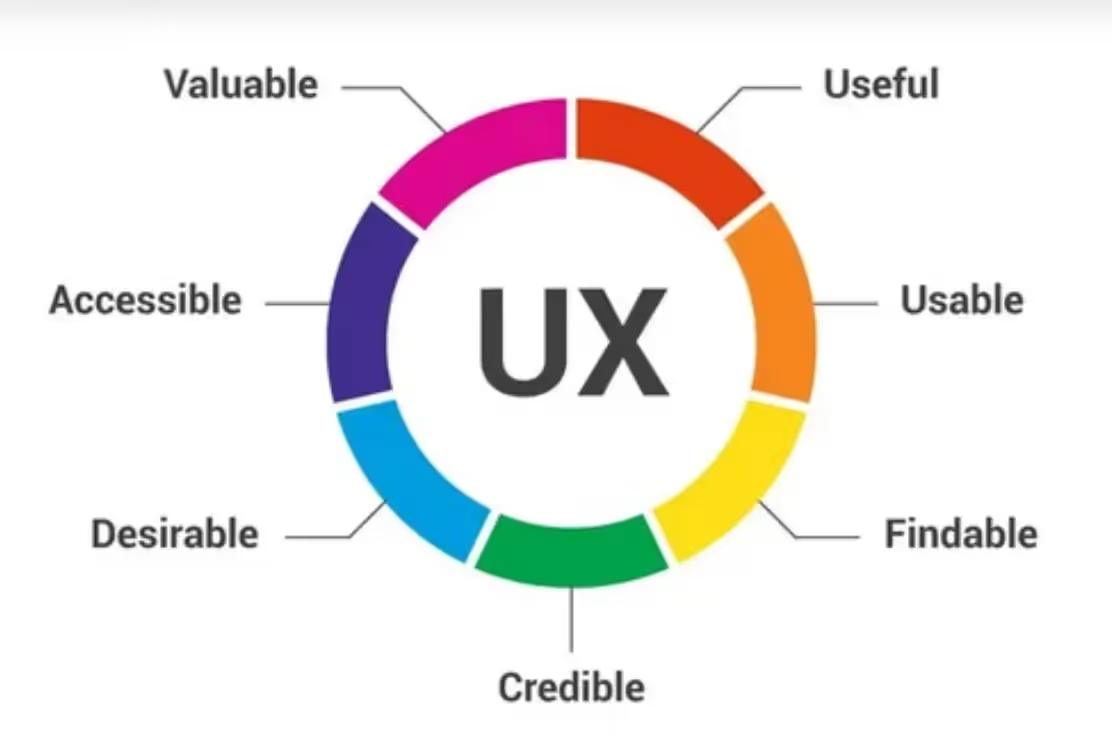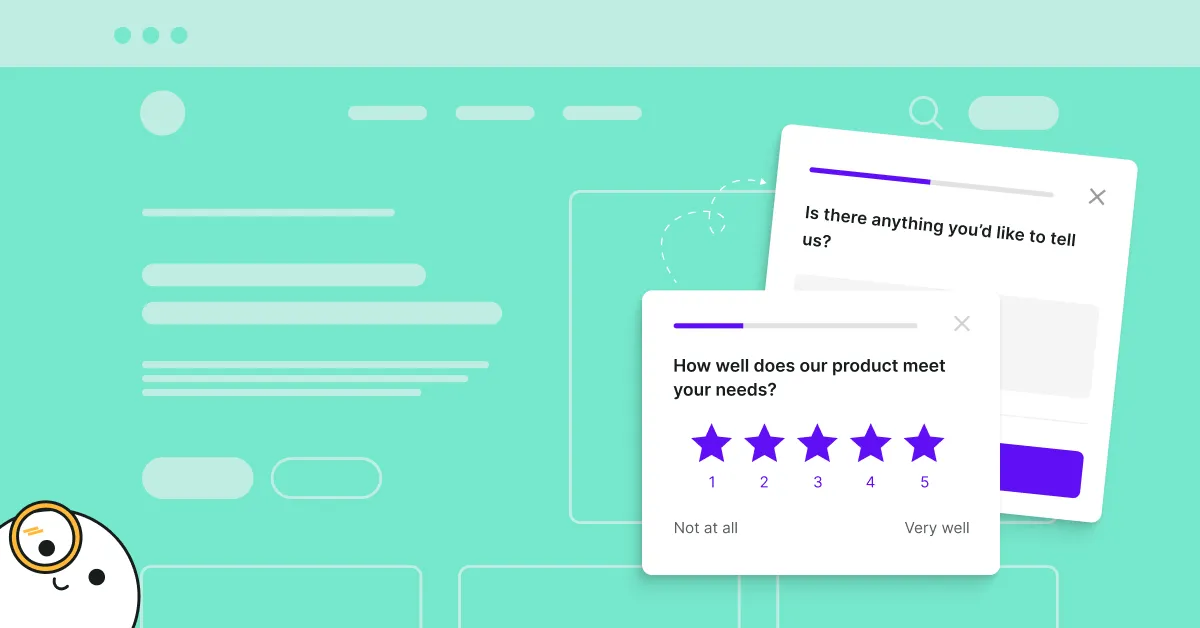Even though the terms customer experience (CX) and user experience (UX) are often used interchangeably, they represent different concepts.
Understanding their unique characteristics and the interplay between them can help you make sure the product or service you offer exceeds the expectations of your customers at every touchpoint.
In this article, we will unpack the differences and similarities between UX and CX, clarifying their unique roles in creating a satisfying journey for your customers.

Defining user experience and customer experience
Before we delve into the differences, let's first define these two concepts.
What is user experience?
User experience (UX) focuses on how a person interacts with a product, system, or service. This interaction includes usability, accessibility, and the overall pleasure or efficiency derived from using the product or service.
It’s about your user's perception and feelings before, during, and after their interaction.
This definition by Steve Krug, author of the bestselling book “Don’t make me think’, aptly describes the essence of UX:
A person of average (or even below average) ability and experience can figure out how to use the thing to accomplish something without it being more trouble than it’s worth.
In this video, Don Norman, the co-founder of the Nielsen Norman Group, explains what the term UX means:
There are 7 factors that come together to create a user experience, including:
- Useful: If a product or service isn't useful, it's unlikely to offer a positive user experience, regardless of how well-designed it might be.
- Usable: This refers to how easily a user can use a product or service. The focus here is on efficiency, effectiveness, and simplicity. A product that is intuitive and easy to navigate will offer a better user experience than one that is complex and confusing.
- Findable: This factor relates to how easily users can find what they're looking for, whether it's a product on a website, a feature within an app, or information within a document. Good navigation, search functionality, and well-organized content are all crucial for findability.
- Credible: Users need to trust and believe in the product or service you're providing. This can be achieved through transparency, honesty, and reliability. Credibility can also be enhanced through good design, up-to-date content, and positive user reviews or testimonials.
- Desirable: This pertains to the design elements that induce emotion and appreciation. Aesthetics, image, identity, brand, and other design elements are used to evoke emotion and build a connection between the user and the product.
- Accessible: Accessibility ensures that the product or service can be used by people of all abilities. An accessible product adheres to accessibility principles, making it easier for everyone to use.
- Valuable: Last but not least, for a great user experience, the product or service must deliver value. It should provide a benefit (like solving a problem or fulfilling a need), be priced appropriately, and meet some intrinsic or extrinsic expectation of the user.

User experience can be measured with a wide range of metrics, such as:
- surveys
- heatmaps
- A/B testing
- user interviews
- journey mapping
- eye tracking
The easiest way to add surveys to your UX research plan is by using an automated survey tool, such as Survicate, which offers hundreds of UX research survey templates, including the Net Promoter Score:
What is customer experience?
Customer Experience (CX), on the other hand, is a broader term that encapsulates the total journey of a customer's interactions with a business.
It includes all touchpoints from the initial contact through the process of engagement, purchase, use of a product or service, and even follow-up experiences.
It also includes every aspect of a company's offering—from the quality of its products or services to its customer service and company reputation.
CX is about the overall impression that the business leaves with the customer, impacting their perception of the brand as a whole.
In this short video, our colleague Sabina explains what CX is and how to turn good customer experiences into great ones:
Although customer experience is a very broad area, there are metrics you can use to measure specific aspects of it. They include:
- Net Promoter Score
- Customer Satisfaction Score (CSAT)
- churn rate
- customer lifetime value
- card abandonment rate
- retention rate
- Customer Effort Score (CES)
The easiest way to measure many CX metrics, including NPS, CSAT, and CES, is by using automated surveys:
What’s the difference between customer experience and user experience?
While UX is a crucial component of the overall CX, it's essential to understand that they are not the same. Let's explore the key differences.
Scope
UX is a subset of CX. It deals specifically with the product or service's design aspects and how users interact with it. In contrast, CX covers all customer interactions with the brand, including sales, support, branding, advertising, and more.
Touchpoints
UX is concerned with a specific set of touchpoints—those that involve interaction with a product or service. CX, on the other hand, takes into account every single touchpoint between a customer and the company.
Emphasis
UX places its emphasis on the usability and functionality of a product or service. It's about making a website intuitive, a product easy to use, or a system efficient.
CX, however, emphasizes the emotional and psychological relationship between a customer and a business.
It's about evoking positive feelings, building trust, and establishing strong relationships.
How can UX support CX?
Exceptional UX often leads to exceptional CX. When users enjoy interacting with your product, they're more likely to have a positive overall experience with your brand. However, great UX doesn't automatically ensure great CX.
For example, a beautifully designed website with excellent usability (good UX) might leave a bad impression if your customer service is subpar, or the delivery is late (poor CX).
Conversely, you might offer stellar customer service and quick deliveries but still lose customers if your website is poorly designed and difficult to navigate.
In short, you should aim to excel in both areas to truly succeed.

Measure your CX and UX efforts with surveys
While it's easy to confuse UX with CX, understanding their differences and their relative importance can help you succeed in your customer acquisition and retention campaigns.
By improving both UX and CX—by making your products or services a joy to use and ensuring every customer interaction is a positive one—you'll build strong, lasting relationships with your customers and foster brand loyalty.
Surveys offer one of the easiest ways to measure both CX and UX. By deploying a survey, you can gather a wide range of insights about virtually any aspect of your product or service.
To start collecting user and customer feedback, simply sign up for a 10-day free trial, choose from 300+ ready-to-send templates, and then integrate with a third-party tool of your choice.








.webp)





